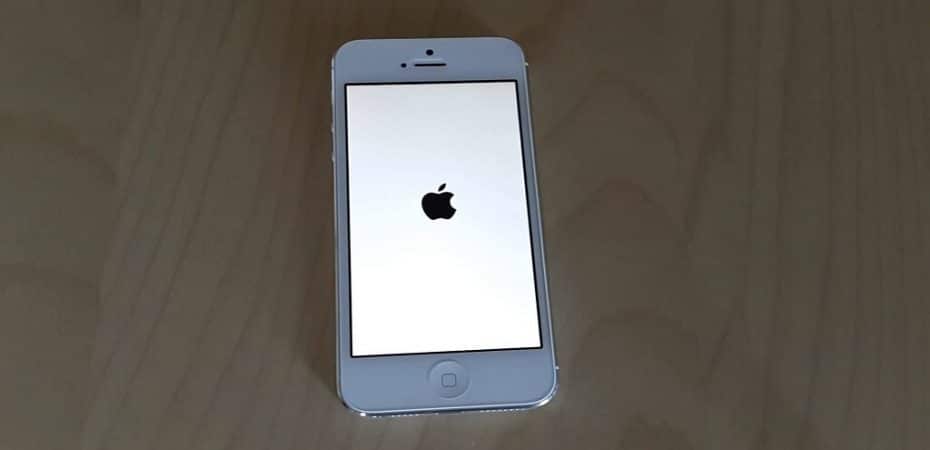If you want to update to the latest iPhone or iPad by first selling your device, or your phone got stolen or accidentally misplaced and want to wipe clean all the data on your tablet or Apple smartphone, then consider performing a factory reset.
Factory resetting your device is one of the quickest and easiest ways of removing all the data from your device and bringing it back to zero. There are many other situations where reset iphone to factory settings is useful. Let’s take a look at how resetting a device is helpful:
Reasons For Factory Resetting Your iPhone
Sometimes your data stored in your iPhone or iPad can cause the device to malfunction. If basic troubleshooting does not work, a full reset might be necessary, although we suggest that you first try restarting your iDevice. Most of the time, many performance issues in iPads and iPhones can be resolved through a factory reset, especially if you are unable to identify the cause of the problem.
It is common for most electronic devices to face issues such as crashing, system lags, freezing, getting stuck in a loop, etc. Although simple fixes like deleting problematic files or apps or even rebooting the device can solve the problem, sometimes wiping a device through resetting is the only way out.
Another situation where a factory reset is necessary is when you pass your device to a family member or a friend or sell the phone to a stranger. Most of us have sensitive data stored on our phones and tablets that should be deleted before the iDevice is sold or given away.
You wouldn’t want someone to have unpermitted access to your private photos, social media information, or your financial data because it can put you at serious online risk that can affect your everyday life.
What Is A Soft Reset, A Force Restart, And A Factory Reset
Let’s start by understanding what a Soft Reset is – you perform a soft reset when you restart your iPhone through the software option, which causes no data loss. Similarly, when you force restart your device, no data is lost; however, you restart your phone using hardware keys. This is typically done when the touchscreen is unresponsive, or an app is causing an issue.
Finally, a factory reset is very different from a soft reset and forced restart because it deletes all your data, all the settings also go back to default, and apps are removed. It essentially reverts you to factory settings and the way it was out of the box.
A hard reset should be your very last resort to fix any issues with your device that you cannot identify and fix. However, it is imperative that a factory reset is performed if you are selling, trading, or giving away your iDevice. Also, you can factory reset iPhone 11 or iPad remotely if it was misplaced or stolen. We recommend that you backup your data before resetting so you can restore everything back.
Backup The Data On Your iDevice
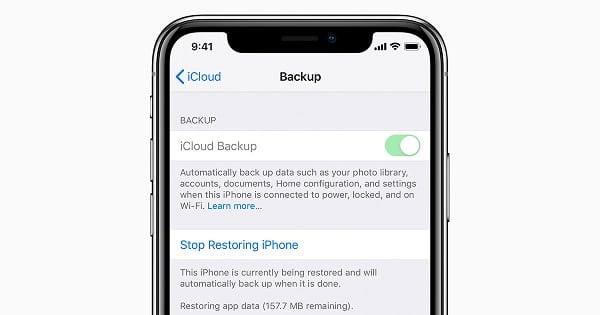
If you don’t want your precious data to be deleted permanently from your iPhone or iPad when you perform a factory reset, it is crucial that you have backed up your files on iCloud or iTunes; otherwise, it will be gone forever.
It is important to remember that Apple devices have out-of-the-box encryption, meaning any erased data is entirely removed and can’t be retrieved using the software. They aren’t hidden or displayed as free space; they are completely gone. So ensure to back up any critical files, photos, videos, etc.
You can easily find the different methods of backing up an iDevice on the Apple support pages. Usually, data from your iOS device is copied to iCloud or iTunes.
Here are some ways of backing up your iPhone or iPad:
To create an iCloud backup, connect to a Wi-Fi network, go Settings, select iCloud from the menu, and choose iCloud Backup. Press Back Up Now to start transferring your files to your iCloud account linked to your Apple ID.
To check and manage your files that have been successfully backed up on your iCloud, go to Settings, tap iCloud from the menu, select iCloud Storage, and choose Manage Storage to see the size and the time of your latest Backup. After the Backup is complete and satisfied, you can factory reset your iPhone or iPad.
You can also perform a backup via iTunes. To do that, open iTunes and then connect your iOS device to your computer, allowing the system to access the iPhone or iPad. Select your iPhone device from the device list and press Backup Now. This is one of the easiest ways of backing up your desired data.
4 Methods Of Resetting An iPhone
Resetting An iPhone Without a Computer
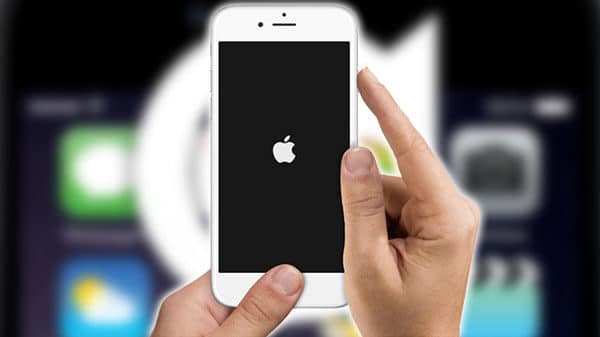
It is possible to factory reset iPhone 6 or iPad when you don’t have access to a computer. Simply go to the Settings, select General, choose reset, and finally, press Erase All Content and Settings.
Press Erase Now and provide your iPhone password when the system prompts; you will also have to enter your Apple ID password, then select Erase to initiate a factory reset.
- Go to Settings of your iPhone. Find the General option that has the gear icon.
- Press General.
- Then scroll down and select reset.
- Select the “Erase All Content & Settings” option, which is the option that will wipe all your data and preferred settings and revert the phone to its original state. Important – Back up your data before choosing this option.
Note: If the system alerts you with a pop-up reading “Documents and Data Are Being Uploaded to iCloud,” select the “Finish Uploading.” Then Erase option to complete the backup first, ensuring that you won’t accidentally delete any important files before they have been transferred to your iCloud account.
- Then, select Erase Now.
- Provide your iPhone passcode, which you use to unlock the phone.
- Select Erase iPhone twice.
- Give your Apple ID password and select the Erase option on the top right corner of the screen, which will start the factory reset process.
After the iPhone has been reset, it will restart. At this point, you can close it if you plan on selling or giving the phone away, or you set up the phone again by following the on-screen instructions.
If you have forgotten your iPhone passcode and aren’t locked after too many failed attempts to enter the password, you can use a Mac computer to perform a factory reset.
How to Factory Reset iPhone from Finder
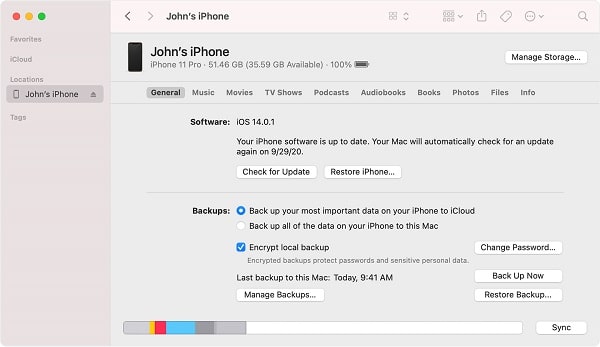
The simple way to factory reset iPhone 6s from Mac Finder is to connect your phone to the computer with a USB cable. Next, open the Finder app and select your iPhone’s name from the sidebar on the left. Lastly, choose the General tab and choose Restore iPhone.
If you have upgraded to macOS Catalina, you can easily factory reset iPhone via the Finder app’s Device Summary page. After your iPhone’s information fully loads, you will easily find the restore option under the General tab. I’m cade you have forgotten your iPhone’s passcode; you can reset your iPhone with the following:
Note: If you’re locked out of your iPhone, the following steps are useless. If your iPhone has locked you out because you entered the incorrect password many times, then the next section is ideal for you.
- Take any USB lightning cable compatible with your computer and iPhone, and connect your iPhone to a Mac.
- Once connected, open the Finder app (click open the half-blue, half-gray face icon in your dock) or right-click anywhere on your desktop screen and press Command + N keys simultaneously.
- Now click the left sidebar on your iPhone under locations. Find your iPhone’s name in the left sidebar. If you don’t find it, then click anywhere on your desktop and choose Finder from the menu bar that you’ll find at the top of your screen. After selecting Finder, click on Preferences, and select the Sidebar tab. Now check the box next to DVDs, CDs, and iOS Devices.
- Open the General tab and select Restore iPhone. It is essential to know that selecting Restore iPhone will reset your iPhone to factory conditions.
- If your Find Me is enabled, then continue. If your Find Me is not enabled when you restore your iPhone, then skip to the last step.
- Now open Settings on your iPhone and tap on your Apple ID. You will find your Apple ID on the top of the Settings page.
- Now select “Find My,” and then click on “Find My iPhone.” Next, turn the slider ON next to “Find My.”
- Next, enter your Apple ID password and select Turn Off, which is available on the top-right corner of the screen. Once done, go back to your Mac and select the “Restore iPhone” option.
- Now select between “Back Up” or “Don’t Back Up,” depending on your requirement. If you haven’t made a backup before, then it’s now or never.
- Lastly, select Restore to initiate the reset process.
Suppose you are locked out of your iPhone because you have entered the wrong password several times. Then you can attempt resting your iPhone by entering Recovery Mode with the following method.
How to Factory Reset an iPhone Without a Passcode
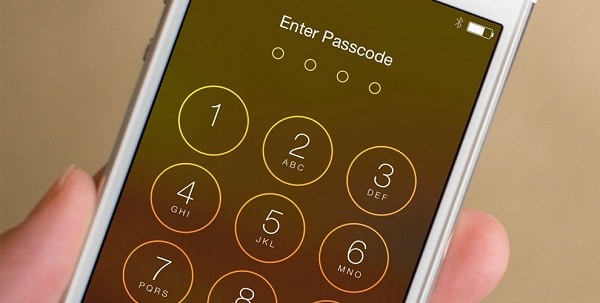
Start the reset process by connecting your iPhone to a Mac computer. Then press and hold your iPhone’s power and home or the volume buttons simultaneously until your iPhone restarts. While you hold the buttons, plug your iPhone into your Mac computer and select Restore when your Mac prompts it. Following are the easy guidelines to reset your device:
- Enter your iPhone’s Recovery Mode by simultaneously pressing the power and home or volume buttons. This process may vary according to the model.
- iPhone 8 and newer: Press and hold Power and Volume Up or Volume Down buttons until the power slider appears. Turn the power slider to the right side to turn off the device. Keep holding the two buttons while you connect your iPhone to your Mac computer with a USB cable. Release the buttons once the Recovery Mode screen appears.
- For iPhone 7: Press & hold the side power and volume down buttons until the power slider appears. Push the power slider to the right side to turn off the device. Hold the two buttons till you connect your iPhone to your Mac PC with a USB cable. Release the buttons when Recovery Mode appears on the screen.
- For iPhone 6s and older: Press and hold the (power) side/top button and Home button until the power slider shows up on the screen. Pull the power slider to the right to turn off the device. Keep holding the two buttons as you connect your iPhone to your Mac PC with a USB cable. Release the buttons once the Recovery Mode screen appears.
2. When the Restore prompt appears on the computer screen, click it. Finder will notify you about a problem with your device, and your iPhone requires an update or restoration. Select Restore to begin the reset process.
In case Mac isn’t available, you can factory reset your iPhone with the help of the iCloud website.
How to Reset iPhone to Factory Settings from iCloud
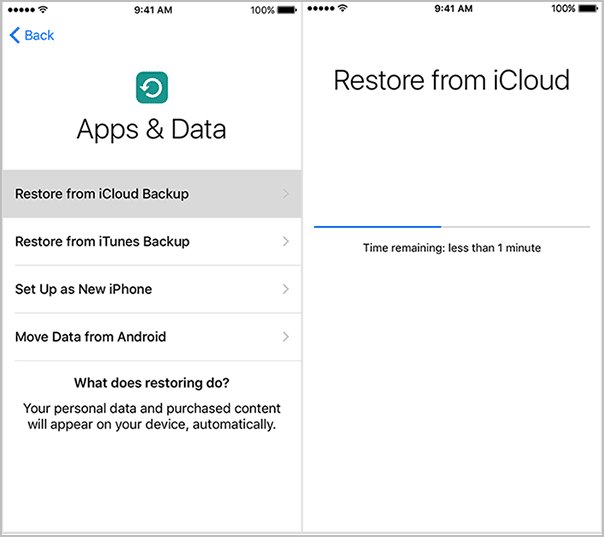
If you have forgotten your iPhone passcode, you can easily reset your iPhone through iCloud. To reset your iPhone from iCloud, having the Find iPhone function enabled on your iPhone’s iCloud settings is essential.
Follow the instructions below to reset the iPhone from iCloud:
- Go to iCloud.com and enter your login details to log in.
- Next, verify your identity with the help of two-factor authentication. Apple will send you the code to another device or an email address.
- Find and select “Find iPhone.” Note: It is important to have an active Find My feature to complete this process. If your Find My feature is not enabled, go to Settings > Apple ID > iCloud > Find My, slide the slider option to green.
- Enter your password and log in to iCloud.
- From the Alp Devices drop-down menu, select your iPhone. The All Device menu shows the list of all Apple devices that are connected to the iCloud service.
- Finally, select “Erase iPhone” to complete the reset process.
How to Soft Reset (Reboot) an iPhone or iPad
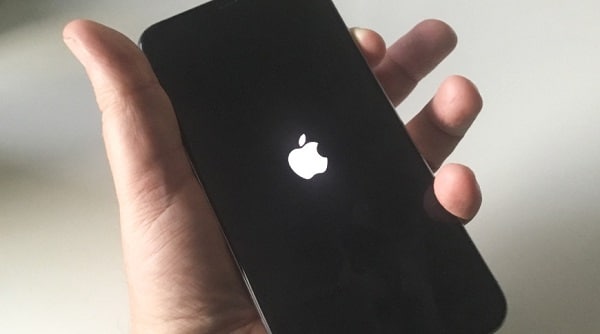
If your iPhone is crashing and lagging, the best and the quickest way to resolve the issue is to reboot the device. Don’t stress about your data getting deleted permanently while you soft reset your iPhone. If your iPhone device has a home button, you can reboot it by pressing the home and power buttons together at once for 5-10 seconds.
If your iPhone doesn’t have a home button (newer model iPhones don’t have a home button), then follow the steps below to restart your iPhone:
- Press and release the Volume Up and Volume Down buttons.
- Then hold the Side (power) button to force a restart of your iPhone.
The method, as mentioned earlier, will force restart your iPhone and close any unnecessary processes that might be causing lag and other issues. This method also works if your phone suddenly shuts off and would not turn on back again. Plugin your iPhone charger or connect it to the iPad charging block while performing a soft reset.
Restoring An iPhone
Restoring your iPhone deletes all of your previous settings and data (photos, contacts, and so on) and then installs the most recent iOS version on your iPhone. We recommend creating a backup before beginning a restore to avoid losing your photos, contacts, and other vital saved data!
Launch iTunes and plug in your iPhone via a charging wire to restore an iPhone. Then, tap on the iPhone icon in the top left-hand corner of iTunes. Then, select Restore iPhone.
When you select Restore iPhone…, a confirmation prompt will show on the screen, requesting that you confirm your decision. Select Restore. After the restoration is finished, your iPhone will restart!
DFU Restoring Your iPhone
A DFU restore is the complete type of restore that an iPhone can undertake. It’s frequently utilized by Apple Store technicians as a final resort to resolve annoying software issues.
Will a factory reset of my iPhone X erase all of my data?
Yes, in a nutshell. A factory reset restores an iPhone X to the state it was at the time it was delivered from the factory. And in order to do so, it must erase everything on the iPhone and then reinstall iOS.
But don’t be concerned. As long as you maintain a solid backup — whether it’s via iCloud, iTunes, or another third-party service — you’ll be able to restore everything on your iPhone after the factory reset is complete.
Closing Words
We hope that our reset methods will help you quickly and safely reset your iPhone. All of our reset methods are tried and tested, so you can completely trust them. However, we do not recommend a hard reset as your first approach to fixing device lag and other issues. A hard reset should be your very last resort, and you should depend on a soft reset to fix the temporary problems. If you decide to reset your iPhone hard, ensure that you have created a backup of all of your essential data.
If you have any questions regarding iPhone factory reset, please ask us in the comments section below.
Read Also
- Should You Use Free iPhone VPNs?
- How to Keylogging on iPhone Legally
- 7 Best 5g Processors In Smartphones
- How to Fix the Samsung Galaxy Tab Reboot Loop
- MacDroid Review
- 15 Helpful Mac Tricks You Need to Know
- Mac vs PC Desktop Computers
- How to Convert M4A to MP3 On a macOS
- The Green line issue on iPhone X
- How To Change Kik Username?

